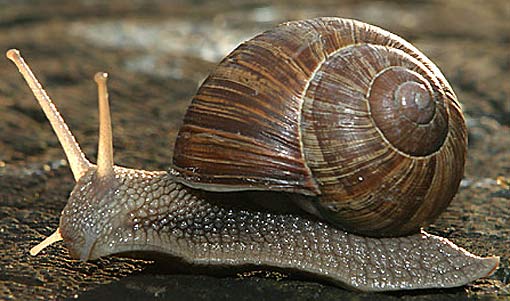Continuation-ready algorithms from STL algorithms
The C++ Standard Library comes with a very well suited set of generic algorithms. The iterator-range design of such algorithms decouples them completely from the underlying data they are operating on, making it possible to apply such algorithms on any entity, if a compatible iterator interface is provided.
My favorite example is stream iterators:
auto numbers = {1, 2, 3, 4, 5};
std::copy(std::begin(numbers), std::end(numbers),
std::ostream_iterator<std::string>(std::cout, " "));The above snippet prints the set of numbers on the standard output. It "copies" the numeric sequence to a sequence of output operations represented by a std::ostream_iterator instance.
But not everything is that simple and awesome. The iterator-range interface comes at a high cost: it's not easy to chain multiple STL algorithms. Whenever you want to apply multiple algorithms step by step the process becomes a bit clumsy:
std::vector<int> v = {1, 2, 3, 5, 7, 11};
decltype(v) w;
std::copy_if(std::begin(v), std::end(v),
std::back_inserter(w),
[](int x){ return is_prime(x); });
std::swap(v,w);
w.clear();
std::sort(std::begin(v), std::end(v), std::less<int>{});Compare that to the more natural, fluent interface operating on the same vector along the pipeline of operations:
v.filter([](int x){ return is_prime(x); })
.sort(std::less<int>{})Snail is my try to get a continuation-ready set of algorithms to operate on C++ containers, but instead of reinventing all the algorithms, addapting them through a continuation monad (or something resembling a continuation monad).
Monads. Everybody in the C++ community is talking about functional programming these days. Doing functional constructions in C++ is not as pretty as in Haskell, but current language standards (C++11 and C++14) help a lot on this matter. Lambdas, auto, function return type deduction, etc.
The inspiration for this library comes mainly from the awesome Joaquín M López Muñoz's "A workshop on monads with C++14" and its exercises about the continuation monad.
With snail I have two main goals:
-
Use existing algorithms: Write a mechanism to reuse the existing algorithms from the Standard Library, instead of hand-writing such algorithms again with a different interface.
-
Simple syntax: Allow consecutive algorithm calls on the same container, with a simple pipe-like syntax built on top of a continuation monad. This is not something new, see Boost.Range or Eric Niebler's range-v3 container algorithms. My point here is to have a working set of pipeable algorithms with a couple of lines only, using existing STL algorithms.
I should recall (again) that the point of this library is not to make an awesome container-algorithms pipeline. What I'm trying to do is to have a working container-algorithms pipeline without much effort, without having to rewrite those algorithms. Just take the STL.
This library relies heavily on function return type deduction and generic lambdas. Any C++14 compliant compiler is fine.
Also, the library is designed to be used with biicode, it has some external dependencies such as string_id. Is far easier to rely on a dependency manager and just #include what I need than having pain with git submodules and related.
STL algorithms operate on ranges, ranges represented by iterator pairs [begin, end). But our algorithms should operate on containers instead.
The first thing we need is a functor to translate STL algorithms from the category of "functions operating on iterator ranges" to "functions operating on containers". That's the macro make_algorithm():
auto sort = make_algorithm(std::sort);
auto w = sort(v);It is obviously not that easy. Different STL algorithms take different number of parameters and operate on ranges in a different way. Some algorithms are mutable on the input range, some others take two ranges (input/output), etc. We should identify the category of the target algorithm to take the correct functor.
The macro algorithm_category(algorithm, category) specifies the category of an algorithm, so when the user requests the container-algorithm equivalent calling make_algorithm() the correct functor is applied.
algorithm_category(std::sort, snail::categories::unary_mutable)
auto sort = make_algorithm(std::sort);
auto w = sort(v);std::sort() takes only one iterator range and mutates it, hence the snail::categories::unary_mutable. Snail defines a simple set of categories inside the snail::categories namespace.
Here's a complete example:
#include <iostream>
#include <manu343726/snail/core.hpp>
#include <algorithm>
algorithm_category(std::sort , snail::categories::unary_mutable)
algorithm_category(std::for_each , snail::categories::unary_inmutable)
algorithm_category(std::transform, snail::categories::binary_mutable)
algorithm_category(std::copy_if , snail::categories::binary_mutable)
auto sort = make_algorithm(std::sort);
auto for_each = make_algorithm(std::for_each);
auto map = make_algorithm(std::transform);
auto filter = make_algorithm(std::copy_if);
int main()
{
std::vector<int> v = {1, 2, 3, 4, 5};
v = std::move(v) | sort([](int x, int y){ return x < y; })
| map([](int x){ return x*3; })
| for_each([&](int x){ std::cout << x << " "; })
| filter([](int x){ return x % 2 != 0; })
| sort([](int x, int y){ return x > y; });
std::cout << std::endl;
v | for_each([&](int x){ std::cout << x << " "; });
std::cout << std::endl;
}Note that container algorithms are designed to be used within the continuation. For example, the binary_mutable category translates algorithms taking an input range writing some transformation on an output range, generating a container algorithm that takes a container and outputs another container. Since the continuation starts with one specific container, the output container type of binary_mutable algorithms is the same as its input by default, to make the continuation continue in a natural way.
I have always had problems when naming projects. "Containuation"? Let's get simpler and choose a random animal name...

"Roman snile" copyright Jiří Bohda
Judge the library by it's features, not by its mascot :)